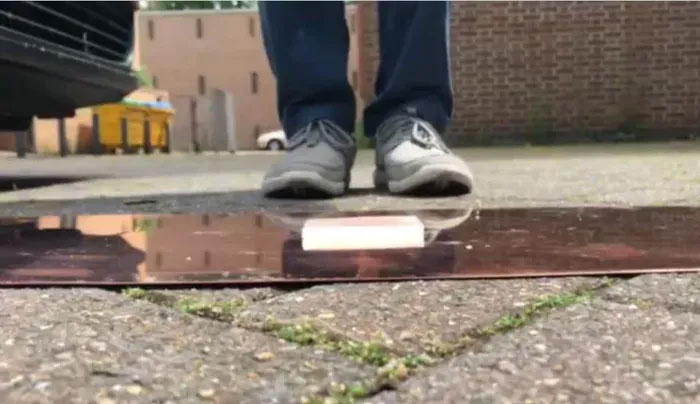According to the research team, the special structure allows the “super hydrogel” to withstand forces equivalent to that of an elephant standing on it without being crushed.
Scientists at the University of Cambridge have developed a new type of soft material capable of enduring tremendous forces. Described as “super hydrogel,” this novel hydrogel utilizes a unique internal structure likened to molecular handcuffs that responds to compressive forces by transitioning to a glass-like state, enabling it to withstand the weight of a car without being crushed.
Hydrogels have long been of interest to materials scientists. Their high water content makes them suitable for use in the human body, while also providing elastic and self-healing properties, making them applicable in robotics, contact lens technology, artificial tissues, and wound healing. The authors of this new study aimed to expand these capabilities by adjusting the molecular structure beneath the material.

“To create materials with desired mechanical properties, we use cross-links, where two molecules are bonded together through a chemical link,” said Dr. Zehuan Huang, the lead author of the study. “We employ reversible cross-linking agents to create soft and elastic hydrogels, but producing a rigid and compressible hydrogel is quite challenging, and designing a material with these properties is entirely counterintuitive.”
To achieve this, the scientists turned to study barrel-shaped molecules known as cucurbiturils, which have the ability to “handcuff” pairs of other molecules together within their cavity. They then used specially designed molecules to remain inside this cavity longer than usual, effectively keeping the network tightly bound and allowing it to transition from a rubber-like state to a super-hard, shatter-resistant glass-like state.
The research team noted that this enables the “super hydrogel” to withstand forces equivalent to that of an elephant standing on it without being crushed. And since they didn’t have an elephant on hand, the team tested the material by allowing a car to drive over it, demonstrating its ability to return to its original shape.
Testing the durability of the Super Hydrogel
“With 80% water content, you might think it would burst like a water balloon. But that’s not the case: it remains intact and withstands significant compressive forces,” said Professor Oren A. Scherman, the head of the study. “The properties of the hydrogel seem to be contradictory.”
The scientists also used this new material to create a pressure sensor for human movements, such as standing, walking, and jumping. They are currently continuing to develop this material with the aim of adapting it for biomedical applications, such as cartilage replacement and soft robotics.
Dr. Huang stated: “To our knowledge, this is the first time a glass-like hydrogel has been created. This marks a new chapter in the field of high-performance soft materials.”
The research was published in the journal Nature Materials.


















































